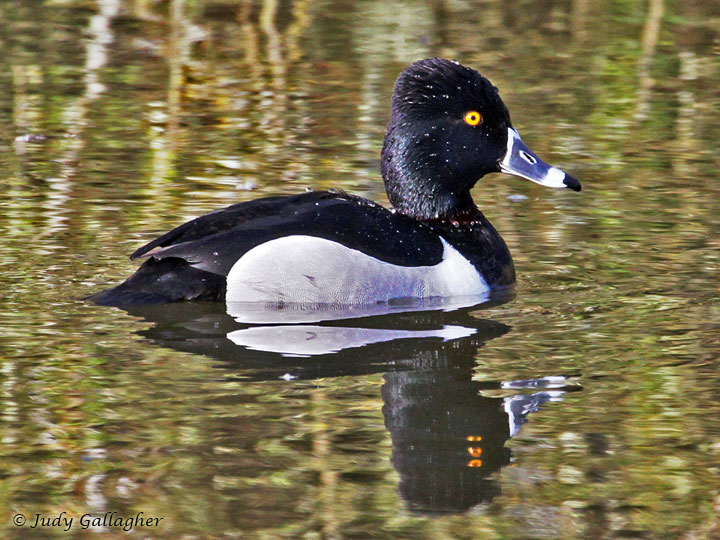
|
Ring-necked Duck The Ring-necked duck is actually most clearly identified in the field by the white ring around its blueish bill, rather than the harder-to-see ring around its neck. It is possible that it received its name from scientists who found the brown ring around its neck while studying dead specimens. The Ring-necked Duck was first described in 1809 by Anglo Irish writer and amateur zoologist Edward Donovan. It does not gather in large flocks. Its main enemies are the mink, raccoons, hawks and owls. The duck’s head is peaked, distinguishing it from a scaup which looks somewhat like the ring-neck. Its eye is a bright yellow. Females ring-necks do resemble the scaup and the redhead. The ring-neck is, in general, an inland species. Its central breeding area is the boreal (subarctic, evergreen, coniferous) forests of the Canadian prairies and parts of the Northwest Territories. It is one of the few ducks that nest in the ponds of the boreal forest. Ring-necks winter in the southern and coastal U.S. , Mexico and the Caribbean. It is a fast flier and can withstand long migrations. It is the most common diving duck to be found in migration in small ponds. Ring-necks eat aquatic plants, insects, snails and clams. Scientists have studied coots robbing wintering ring-necked ducks of their food. (Wilson Bulletin 98(2), 1986, pp. 306-308). They can dive to a depth of 40 feet and rise easily into the air after a running start on the water. Males and females stay in separate groups until mating season and pair up during spring migration in March and April. In courtship, the male may throw his head back, turning it towards the female while swimming away. The female then follows the male. In all likelihood, unpaired ducks arriving at breeding grounds are non-breeders. Female ring-necks choose the nesting area; the males stand by but do not participate in nest-building. The female starts laying her eggs during the month of May, building nests over water or at the edges of the water source. They lay eight to ten eggs and incubate them for 25-29 days. |





